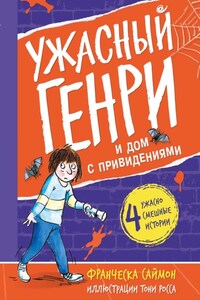TRANSLATOR’S INTRODUCTION
As a lifelong Tolkien fan and an ardent Latinist, translating The Hobbit into Latin has been a long-cherished ambition of mine. But I am aware that others might think of it as, at best, a rather whimsical endeavour (“You’re doing what?”, “The Hobbit – in Latin!”, “Who’s going to read that?!”). So perhaps I should begin by explaining why I think there are such good reasons for doing it that the only wonder is it had not been done sooner.
There is, as anyone who has taken the trouble to study Latin knows, a curious gap in the available reading material. On the one hand are simplified stories for classroom use, on the other the glories of high Latin literature – but remarkably little inbetween. What is there for the intermediate reader, who is tired of the textbook but not quite ready to grapple with the stately poetry of Virgil or the grand rhetoric of Cicero? What for the accomplished reader who wants to escape from Ancient Rome’s marbled halls from time to time? What for the reader who just wants to read Latin – the very idea! – for fun?
This is where the Latin Hobbit comes in. It is nothing more or less than a novel – but a novel now in Latin. Which is to say, it is a Latin text whose principal aim is to be read solely for the pleasure of reading, not one to be studied with the aid of copious editorial notes, or laboured over in order to glean hard-won quotations for an essay assignment. Reading for pleasure is a rare experience for Latinists, who, in my opinion, deserve to enjoy themselves as much as anyone else.
Happily, Tolkien’s immortal story lends itself to such a Latin translation: the sentences are generally short, the sense is always clear, the story is easy to follow. Tolkien’s perspicuous prose and the clarity of his exposition are a gift to any translator. But for the Latinist especially, The Hobbit has other recommendations. There are no telephones, computers, automobiles, or other such modern ephemera in Middle-earth (though Tolkien does mention a train once), so most of the action can be described using the vocabulary of a standard Latin dictionary. Tolkien writes with a sonorous dignity of expression that falls naturally into Latin cadences. And scattered generously throughout are an array of songs, which add delightful variety to the text.
As it turns out, the world of Bilbo Baggins is so vividly present to the imagination that it survives any artificiality imposed on it by translation into the language of Ancient Rome. Not that this version aspires to imitate the idiom of Roman writers anyway (a pointless exercise, in my opinion), but rather to present Tolkien’s words as faithfully and as comprehensibly as possible for the enjoyment of contemporary Latinists. This is not The Hobbit as if written for the Emperor Augustus; it is simply The Hobbit for anyone who has sufficient Latin grammar and a good dictionary.
There are, inevitably, some unfamiliar words. But I have not invented where Latin already has a term that at least approximates to Tolkien’s. So, for example, the fairy-like spirits of the Roman forests were dryades, which is sufficiently analogous to stand in for Tolkien’s elves; and if the Romans didn’t mean by nanus what Tolkien meant by dwarf, then we can say the same for the English word too. Hobbitus itself seemed a relatively obvious coinage, though I did puzzle over troll for quite some time. Trolls being creatures of Norse myth, none of the extant Latin terms quite seemed to fit – words like belua or monstrum were too general, and gigantes are clearly a separate race. But on the pattern of Gollum (a fortuitous neuter proper noun) I felt readers would not object to trollum (plural trolla). I had more trouble when Bilbo taunts the spiders with archaic ‘arachnid’ words like Attercop and Lob, for I not only needed something suitably scurrilous, but also something that would fit the verse metre; with a little effort, though, we might imagine that our Latin-speaking spiders are annoyed to be reminded of the fate of their mythical Greek ancestor, Arachne.
Most proper names remain easily recognisable and have simply been assigned a Latin termination and a declension – Bilbo is Bilbo, Bilbonis, Smaug is Smaug, Smaugis, and Gandalf is Gandalphus, Gandalphi – with the exception of names that are obviously descriptive; so, for example, Thorin’s surname becomes Scutumquerceum, and Bilbo’s bullish ancestor is Taurifremitor. The troll William’s nickname ‘Bill’ I have rendered as Rostrum – a little Latin pun, however execrable.
One of most enjoyable, as well as one of the most challenging, tasks was to render Tolkien’s many songs into Latin verse. Translating poetry from one language to another is necessarily more paraphrase than translation, so my first objective was to make my Latin verses true to the spirit, if not necessarily the letter, of Tolkien’s originals. To achieve this I had initially planned to use classical quantitative metres throughout – those formal edifices familiar to (and sometimes dreaded by) Latin students from classroom encounters with the Augustan poets. However, I soon realised this would not quite do. In the very first chapter, for example, the dwarves sing a solemn and ancient song,








